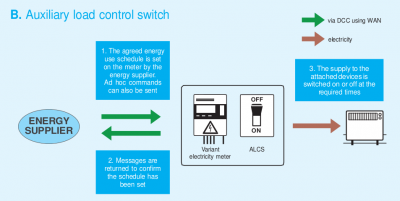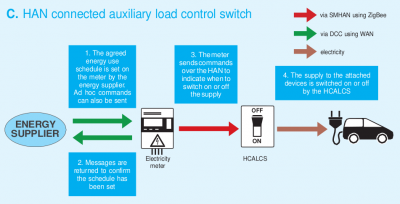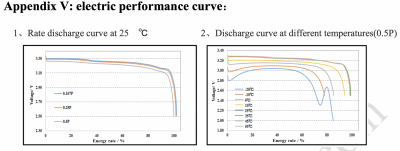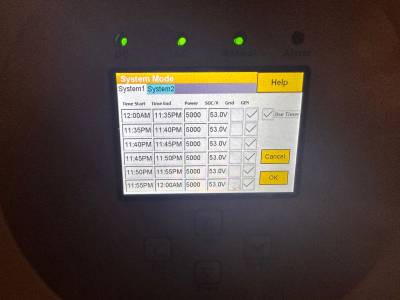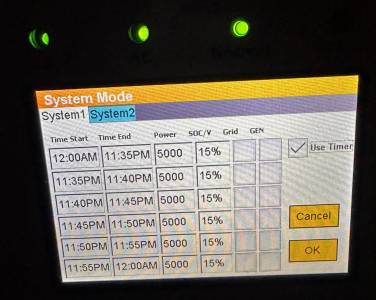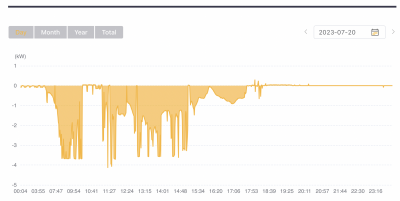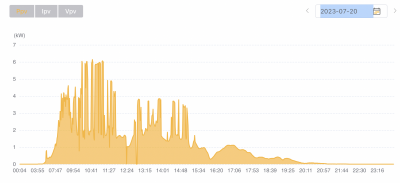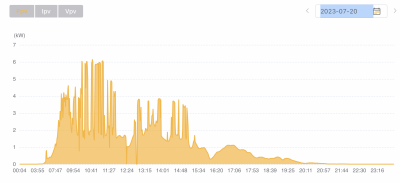Posted by: @derek-mIn my opinion there needs to be a co-ordinated plan, that includes not only additional renewable energy production, but also large scale energy storage. As far as I am aware no such plan yet exists.
Au contraire.
There is a well coordinated plan to establish sub-50MWh commercial battery storage all over the UK.
The bit I don't like about the plan is that it's being implemented by overseas companies using financial backing of their own governments, of whom a major proportion are hostile to the UK.
In fact, Ofgem's just made it easier for them.
As of April 1st, they don't need to contribute anything towards the grid upgrades needed to connect to their chosen sites.
The Forward-looking Charges Significant Code Review of May'22 requires the DNOs to provide the connection itself at cost, but increase their own revenue stream (ie daily standing charge) to fund the network enhancements.
By way of illustration, a storage site about which I'm currently filing a report, has to pay £250k for the 32kV connection.
But the cost to upgrade the associated infrastructure owned by the DNO is £6m.
That means us British consumers have the privilege of subsidising hostile agents to place critical energy infrastructure on our shores, whilst the control & monitoring system doesn't have to be certified beyond the G98/G99 standards that apply to our domestic inverters.
What do you think of that plan?
Since these sites are un-manned, all the controls are operated remotely.
Would you like to hazard a guess as to whether control has been retained by the overseas entities or not?
Save energy... recycle electrons!
Posted by: @chickenbigDoes the existing smart meter system allow intention to be declared?
Yes. An ESME device (Electricity Smart Metering Equipment) must have a minimum of five channels of Auxiliary Load Control Switches (ALCS).
These are set up (a few hours) in advance, using the secure/encrypted commands of the National Smart Meter Network, operated by DCC.
At the onset of the public consultation on the proposed 2014 legislation which underpins this network, the Government issued literature to allow us to see how it could be operated for our benefit.
Pretty graphics...
... but ALCS remains unused.
Save energy... recycle electrons!
Posted by: @transparentbut ALCS remains unused
https://octopus.energy/blog/innovation-in-smart-techs-security/ looks interesting; perhaps they will be using ALCS to support car charging. The SAPC that is mentioned on the linked blog could be a Standalone Auxiliary Proportional Controller which saves having to run wires from the meter to the load. According to this phase 2 will be announced before the end of March 2023 ... that timetable might have been delayed by a department re-organisation.
Posted by: @transparentPosted by: @derek-mIn my opinion there needs to be a co-ordinated plan, that includes not only additional renewable energy production, but also large scale energy storage. As far as I am aware no such plan yet exists.
Au contraire.
There is a well coordinated plan to establish sub-50MWh commercial battery storage all over the UK.
I'm afraid that is not a plan, it is a sticking plaster on a gaping wound.
Taking today for example, demand went from a minimum of 18.1GW at 06:00 to a peak of 28.8GW at 18:00, giving a very rough average of 23.45GW.
Looking at the demand graph for today there is approximately a 9 hour period when demand was below this average value, so to store sufficient electrical energy during this low demand period, to supply the extra demand during the remaining 15 hours of the day, to keep demand fairly constant, would require 9 x 5.35GW = 48.15GWh of useable storage.
A 50MWh battery storage plan is like trying to empty the ocean with a bucket.
Going back to using "AGM V" on the Sunsynk inverter, a key problem with using voltage is that the "System Mode 1" page (system charge/discharge schedule) uses battery voltage to one decimal place as a proxy for SoC. Also LiFePO4 cell discharge voltage curves do have a temperature dependence (perhaps -0.05mV per 15 degree drop), which is comparable to many tens of % SoC.
When using the BMS integration and (I guess) "AGM %" there is at least some user-meaningful control of how full they are (both measures may drift, although for Seplos the former gets reset to 100% when hitting the battery over-voltage).
Posted by: @chickenbigon the Sunsynk inverter, a key problem with using voltage is that the "System Mode 1" page (system charge/discharge schedule) uses battery voltage to one decimal place as a proxy for SoC.
Erm... as a contributor here who has neither a Sunsynk inverter nor a Seplos BMS, are you telling us that the inverter assesses the SoC of the attached battery(ies)? 🤔
Or is the SunSynk inverter merely reporting/displaying a SoC which has been sent to it from the BMS?
Save energy... recycle electrons!
Posted by: @transparentthe inverter assesses the SoC of the attached battery(ies)
In "AGM V" mode the inverter charge/discharge (in "System Mode 1" page) is controlled by the voltage of the battery.
In Lithium BMS and "AGM %" the inverter charge/discharge is controlled by the SoC of the battery.
Therefore in "AGM V" mode if the user wants to control inverter charge/discharge by something approximating battery SoC a translation between voltage and SoC needs to be performed in the user's head, and this is very approximate given voltage characteristics and temperature sensitivity.
Posted by: @transparentis the SunSynk inverter merely reporting/displaying a SoC which has been sent to it from the BMS
In Lithium BMS mode I believe this is what is being displayed. I am guessing that in "AGM %" mode Coulomb counting is done to determine and display SoC.
Neither of those options sounds satisfactory to me.
Experience over the past year with trialing seven different BMS units has left me to conclude that their SoC reading is the least accurate/reliable of their four main funtions:
- Balancing
- Battery over-voltage/current protection
- Battery under-voltage protection
- State of Charge
That's why I think Batrium and Victron have secured themselves market dominance in this respect.
So if the SunSynk inverter is relying on the BMS to provide a SoC reading in 'Lithium mode' then you can't depend on it unless you've just established the 'Full' point.
For daily off-grid use, the information you're most likely to need is "how much electricity do I need to buy in from the grid?" assuming that you are also checking the weather to estimate how much solar you'll get during the next day.
When you need that SoC reading coincides with the battery being somewhere in the middle of its range.
And we already know that the voltage is pretty flat between 25% to 85%.
Save energy... recycle electrons!
Posted by: @sikorsky92This to me presents the problem that the BMS is always then looking to trigger this voltage to find 100%
will this settle down and charge to just under the voltage? Time will tell
You could setup logging on the Seplos BMS Battery Monitor PC software, I think it should show you over time what is happening when your Sunsynk stops at "100%"?
Posted by: @chickenbigThe key was to set SoC to 15% with Grid and Gen unticked. Simple.
Glad you got that sorted - I did think it would have been that, hence asking for you to post those screens in particular. They are confusing, and the manual does not really help at all.
Posted by: @chickenbig-- Attachment is not available --
I don't have "Priority Load" ticked, and mine also works as required. Would you try unticking it and see what happens? I don't think it's needed, and still think it relates to the "Load" output, but perhaps the inverter works either way if there is actually only "Grid" connected.
Posted by: @chickenbigI have "Solar Export" ticked in readiness of SEG, along with limiting to 3680W export (*cough* G100 import limiting *cough*).
Do you see it only export up to that limit, out of interest?
Posted by: @chickenbigSo the system now compensates for home consumption and prioritises battery charging over export. One slight niggle is the slight grid draw (~40W) only when charging batteries from solar.
Mine uses 20W - which is the "Grid Trickle Feed" setting, apparently it uses grid import to stop it exporting - there is a video somewhere by Keith Gough. You have got 0W in there, what happens if you put 20W, perhaps if it's 0W it defaults to 40W?
Posted by: @chickenbigBMS tells the inverter that that charge/discharge limits are 200A and I think I set the limits to 100A per battery.
Would you mind posting a picture of your LiBMS page? I'm interested to see a two battery set up. Normally with one Seplos battery box it has a Discharge of 195A, and a Charge of 100A. I don't remember seeing any settings in the BMS for charge/discharge rates, are you sure you set something?
BMS tells the inverter that that charge/discharge limits are 200A and I think I set the limits to 100A per battery.
Posted by: @chickenbigyou need to be on 3384 (and change the label on the side of your inverter) for it to be ENA approved.
My Firmware is COMM E426 MCU 3381-1515 - so you are right, it looks to be out of date. I didn't really want to update it as I'm always nervous of these updates bricking something, if it's working, leave alone was my thought.
However, you are right, I should update it - how did you manage it? Another reason for not doing it was it reads as they only let Approved Installers do it...more possibility for mistakes.
I've just asked for both my Single and Three Phase user profiles to be upgraded to Approved Installers, have you done this? At the very least I need Advanced User as I'm in and out of the garage changing settings at the moment.
Posted by: @vaugiI don't have "Priority Load" ticked, and mine also works as required. Would you try unticking it and see what happens?
I believe that this prioritises using the energy at that moment above charging the battery (and all of these above exporting to the grid if allowed).
Posted by: @vaugiDo you see it only export up to that limit, out of interest?
where the power generated by solar significantly exceeds the 3.68kW limit.
Posted by: @vaugiYou have got 0W in there, what happens if you put 20W, perhaps if it's 0W it defaults to 40W?
I did try non-zero values, but this made no difference to the draw from the grid.
Posted by: @vaugiWould you mind posting a picture of your LiBMS page?
Interestingly the export limit is 200A. I do hope that the minimum of discharge rate set on the inverter and the BMS setting is used! I set the charge and discharge rates on each BMS, which seemed to get upgraded to 200A :-/
Posted by: @vaugihow did you manage it?
I actually phoned Sunsynk support and talked the case over with them (unresponsive installer etc etc). They raised a ticket and the firmware was upgraded within 12 hours or so. https://www.sunsynk.org/tech-support has a link to allow you to request the upgrade, which might be worth trying before calling support.
Posted by: @chickenbigInterestingly the export limit is 200A.
Aagh!
The first time I read this, I assumed you were talking about export to the grid!
The term "export limit(ation)" needs to be reserved by us here for use only when we're discussing grid export.
That matches the terminology used by the ENA and its DNO membership.
Posted by: @chickenbigI set the charge and discharge rates on each BMS, which seemed to get upgraded to 200A
upgraded where?
You mean the BMS overruled what you'd set?
or that the SunSynk inverter 'upgraded' the charge/discharge rate?
Save energy... recycle electrons!
- 26 Forums
- 2,417 Topics
- 54.8 K Posts
- 180 Online
- 6,096 Members
Join Us!
Worth Watching
Latest Posts
-
RE: Octopus Cosy 12 Heat Pump Regret: Incredibly Loud, Poor Heating & Constant Hum - Help!
So, after much anguish, and even visiting the neighbour...
By razz , 52 minutes ago
-
MLCP (Multi-Layer Composite Pipe) for ASHP
@editor nope. The info you reported was sufficient for ...
By iotum , 3 hours ago
-
RE: Advice for a novice on Mitsubishi Ecodan 6kW
@robs Quick response while I'm in stationary traffic le...
By Sheriff Fatman , 3 hours ago
-
RE: Setback savings - fact or fiction?
Maths looks right to me, my only question about this ca...
By JamesPa , 4 hours ago
-
RE: Ideal HP290 14kW ASHP - how to optimise
@jamespa I wasn’t offended at all. You are very knowled...
By Davesoa , 4 hours ago
-
RE: Experience - New Build / Complete New Heating System
@vincro I would be surprised if it is much above 5 to 6...
By ASHP-BOBBA , 4 hours ago
-
RE: Recommended home battery inverters + regulatory matters - help requested
Yes, certainly not enough could have been tested in any...
By Batpred , 5 hours ago
-
RE: Post-Traumatic Heat Pump Stress Disorder
Yes bang on and maybe I can illustrate that by way of e...
By iotum , 7 hours ago
-
-

RE: Replacing my 18 month old Hitachi Yutaki ASHP
A big thank you to @jamespa for all his efforts online ...
By trebor12345 , 10 hours ago
-

RE: GSHP WOES! Midland based engineer recommendations?
@editor It is indeed for servicing. My current service ...
By Morgan , 10 hours ago
-
RE: Sunsynk Whole House Backup Issue
Hi @lostandconfused , I agree that topic/thread is the ...
By Batpred , 11 hours ago
-
RE: Speedcomfort radiator fans
In case it helps Andrew Kuhne on openenergy monitor has...
By JamesPa , 11 hours ago
-

Things have gone quiet with you @drei. Any updates?
By Mars , 14 hours ago
-

RE: Passiv Smart Thermostat - Help & Forum Support
Thanks @tim441. Interesting timing, as Passiv are a cur...
By Mars , 16 hours ago
-
Hi everyone, I have a two year old Marlec Solar iBoos...
By Tallmarc , 19 hours ago
-
RE: Please help with the settings ecodan
Are you trying to address any particular performance is...
By Sheriff Fatman , 1 day ago
-
RE: Solis inverters S6-EH1P: pros and cons and battery options
🤣 Well, I never managed to get the HA solis "...
By Batpred , 1 day ago

